King’s Battle
Seven year’s war using King of The Battlefield rules, using 2mm armies. (News: the figures below were recently rebased, see here 2mm Prussian armies).
Figures painted by Mario and later me over a timespan of 20 years or more (but it takes overall much less than a week to paint a whole army..).
Units are organized on two 40mm X 20mm bases, with integral artillery. Cavalry uses same base type, while artillery batteries are mounted on two 20mm X 40mm.
One nice thing about 2mm is that is simple to depict formations. I have bases for deployed and marching infantry, deployed and marching cavalry, deployed and limbered artillery. Not all are fully painted yet and only some types appear on the following photos.
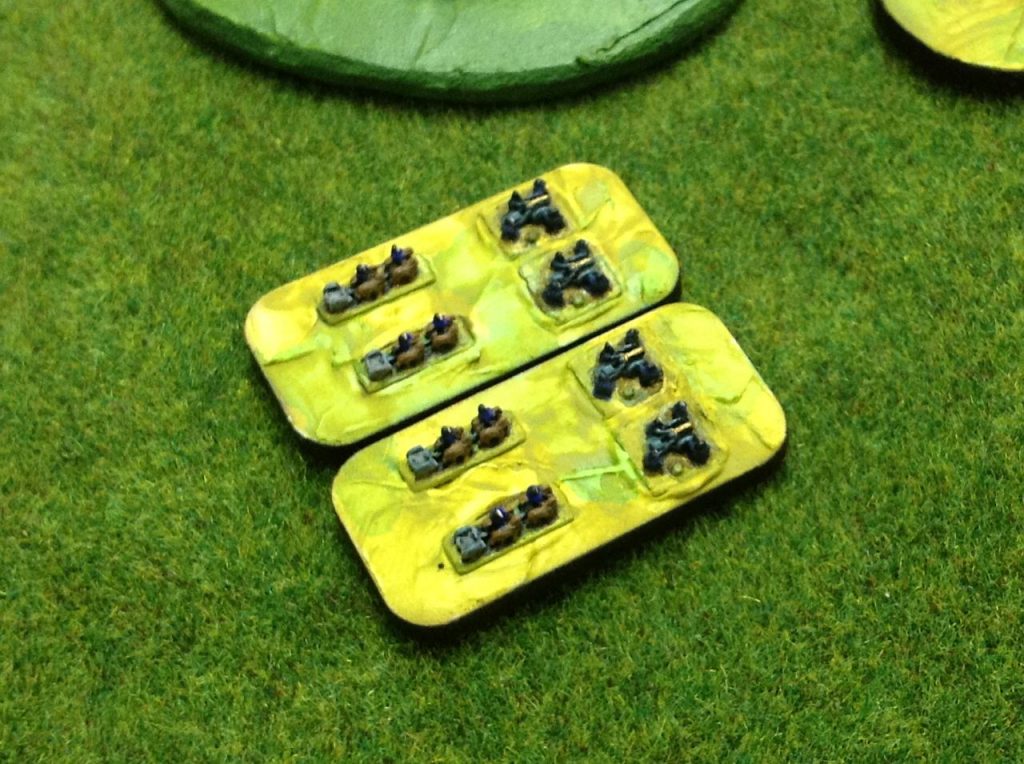
Marching units are the new Irregular bases, mounted on 20mm X 40mm bases.
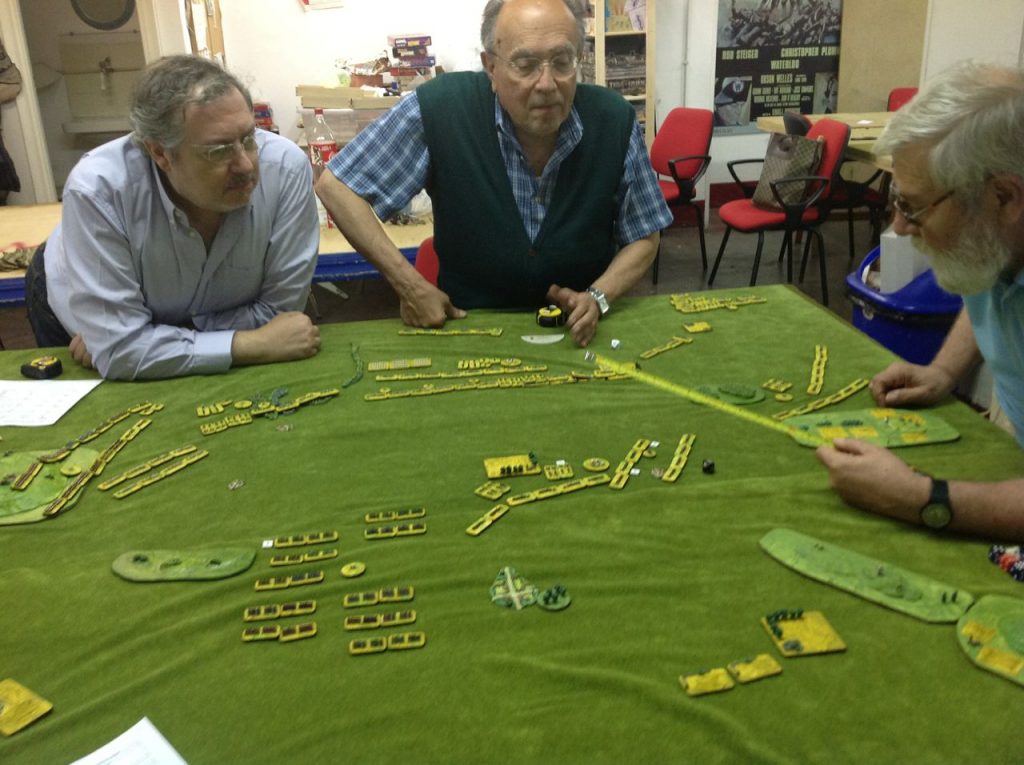
Here is an example of a deployed prussian artillery battery.
The battle itself has been played on a 180 cm X180 cm table, using standard scale since a deployed units occupies 8cm instead of 9cm, as foreseen for 15mm figures.The terrain was fairly open, with prussians in attack. The only obstacle fro the prussian was a number of fields surrounded by low walls on the left of the austrian army.
Tables can be much nicer than this, with little effort, do not copy us..
The armies were divided in three columns, both had one cavalry and two infantry columns.
The prussian commander leading the austrian infantry columns, all cavalry on the left is deployed at the start of the battle.
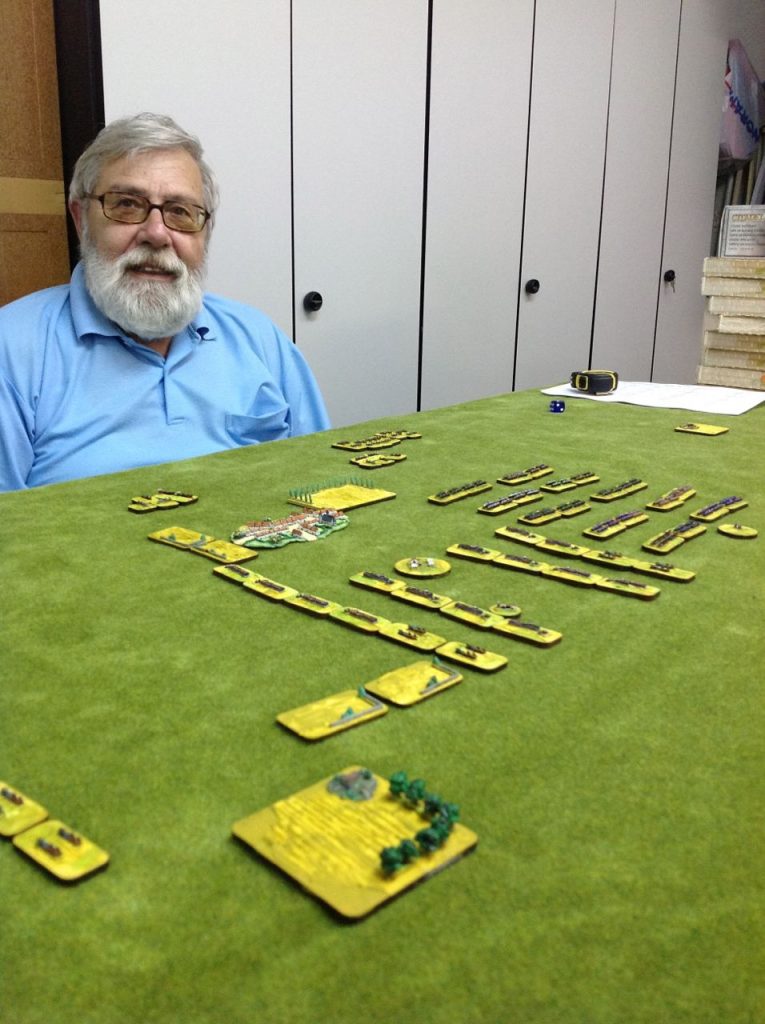
A detail of the prussian deployment, deployed brigade on top, infantry columns and limbered artillery on the right, Army headquarters on the lower right.
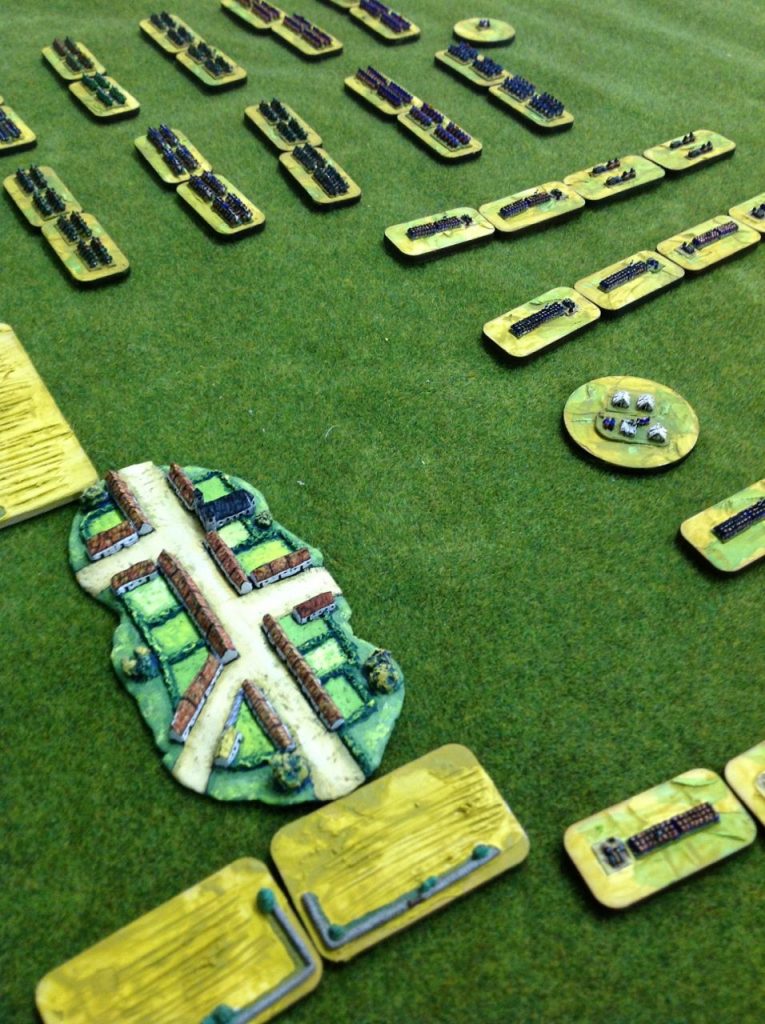
The right wing of the austrian army. Two light infantry battalions in the woods, on top of the woods actually, it does not look too good, we must improve on this.
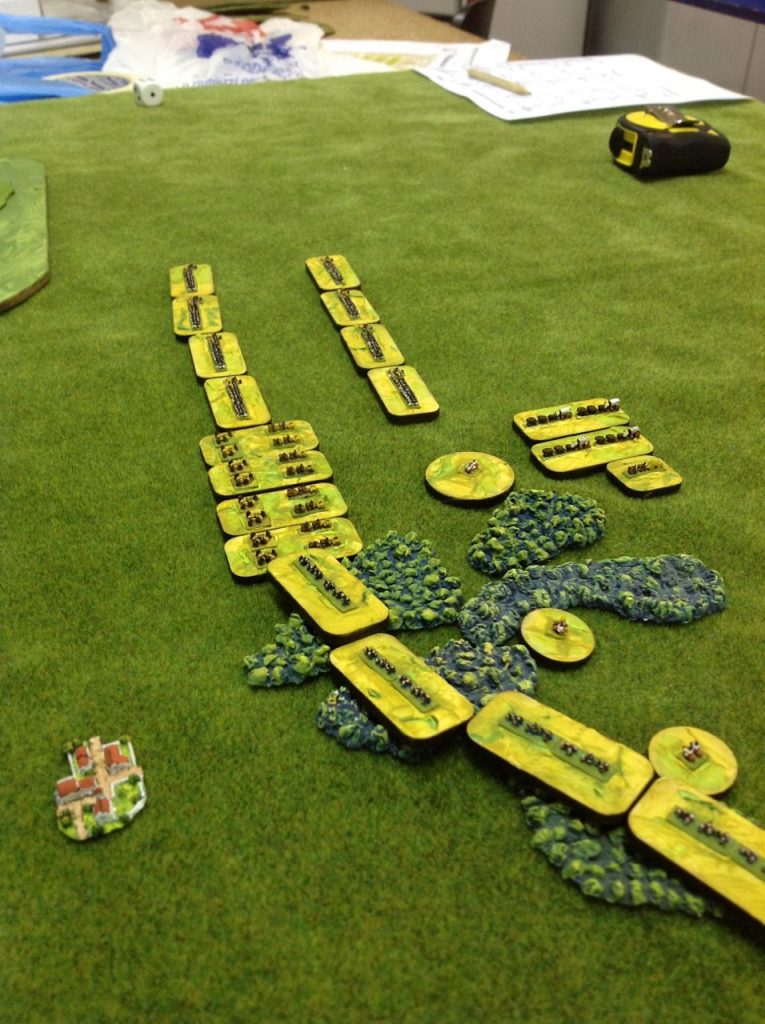
All austrian grenadiers are waiting in column behind the front line, ready to be launched against a weak spot of the enemy.
The austrian campo of the foreground is the objective of the prussian attack.
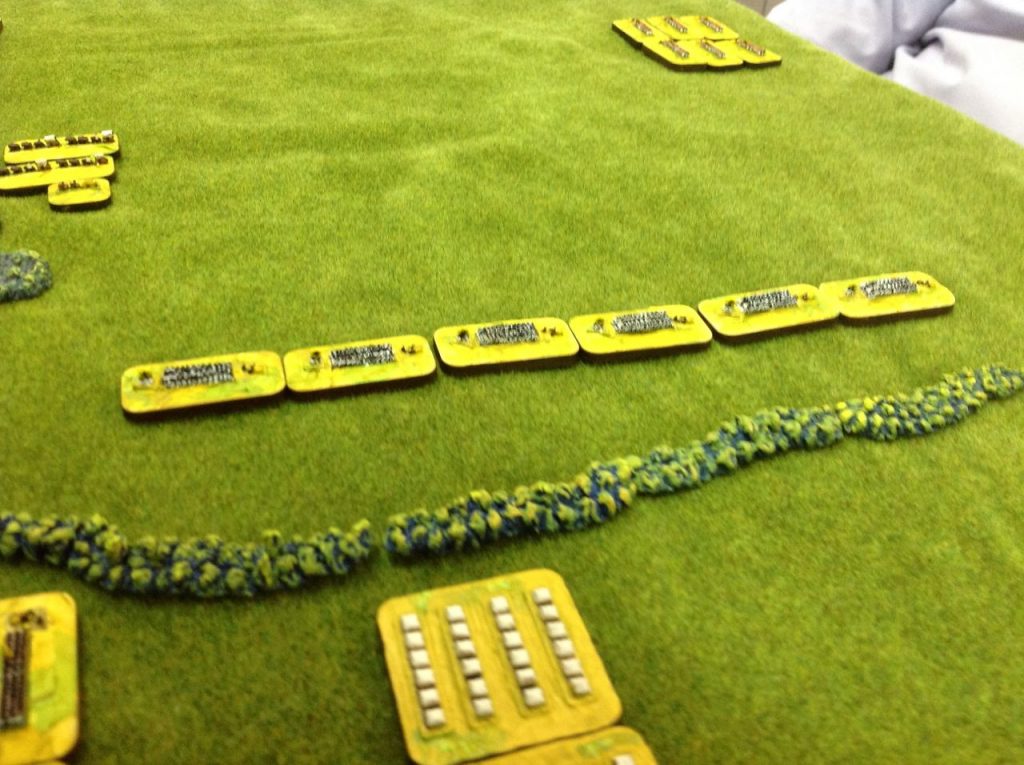
All austrian cavalry moves in column over the hill to attack the left flank of the enemy.
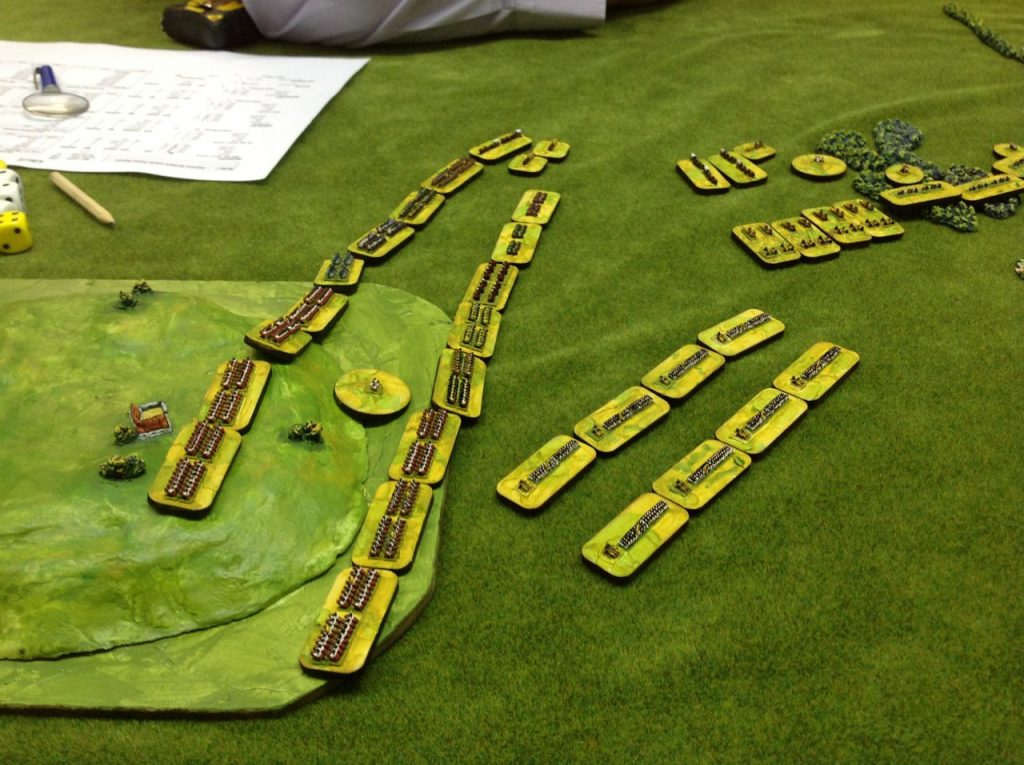
An austrian brigade deployed in double line advances. Battalion guns are ready to fire at long range.
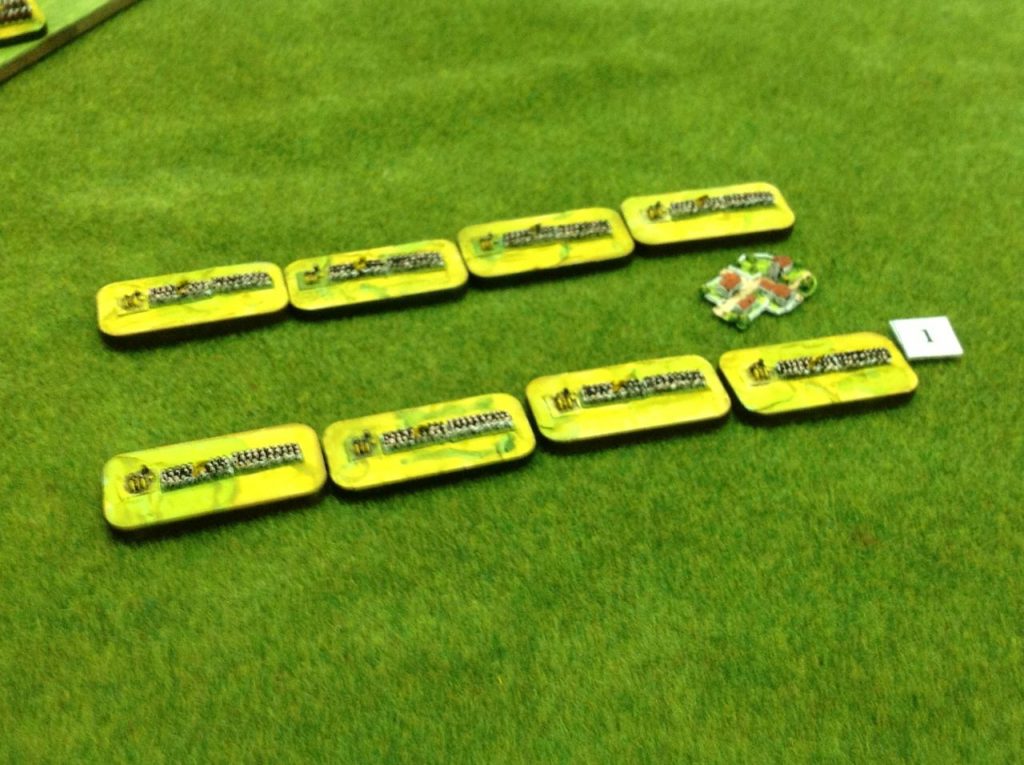
Austrian defenders are firm and use walls to protect a filed battery.

Part of the prussian cavalry turns left to defend their exposed flank A bloody melee leaves on the field many prussian troopers, overwhelmed by the numbers of the enemy. The morale of the austrian cavalry column reaches the break point. A cavalry melee makes them loose the three morale points of the cavalry wing in one turn. They are no longer able to advance but just to stand the ground.
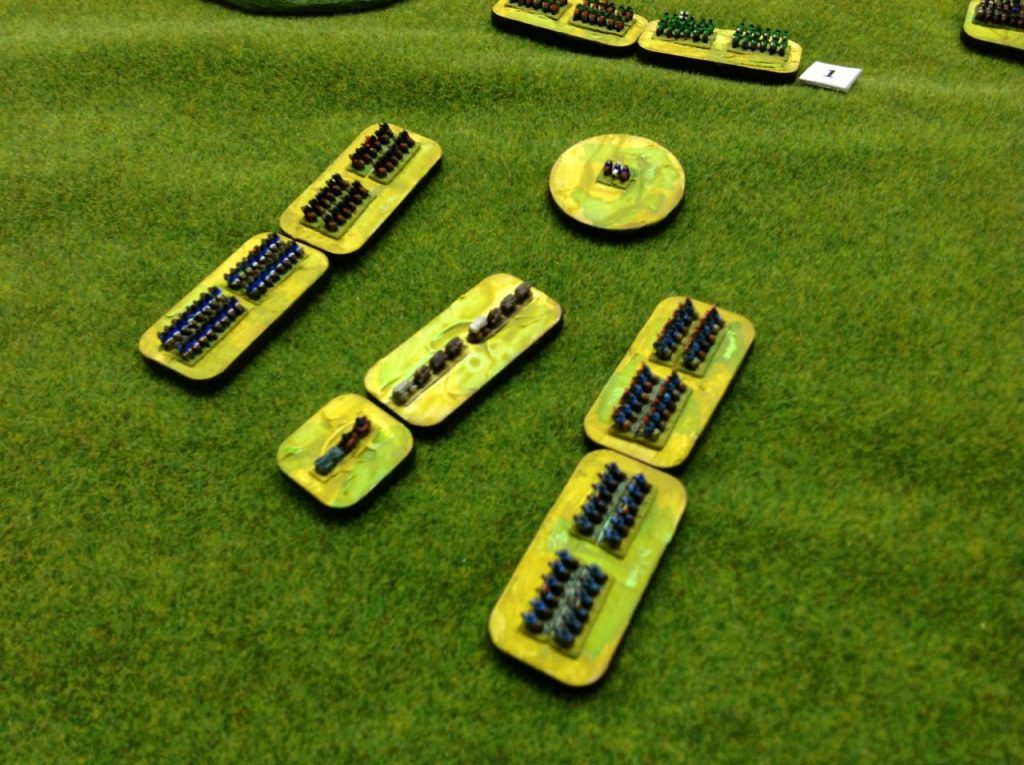
On the right wing the prussian infantry attacks. They double the enemy in numbers.
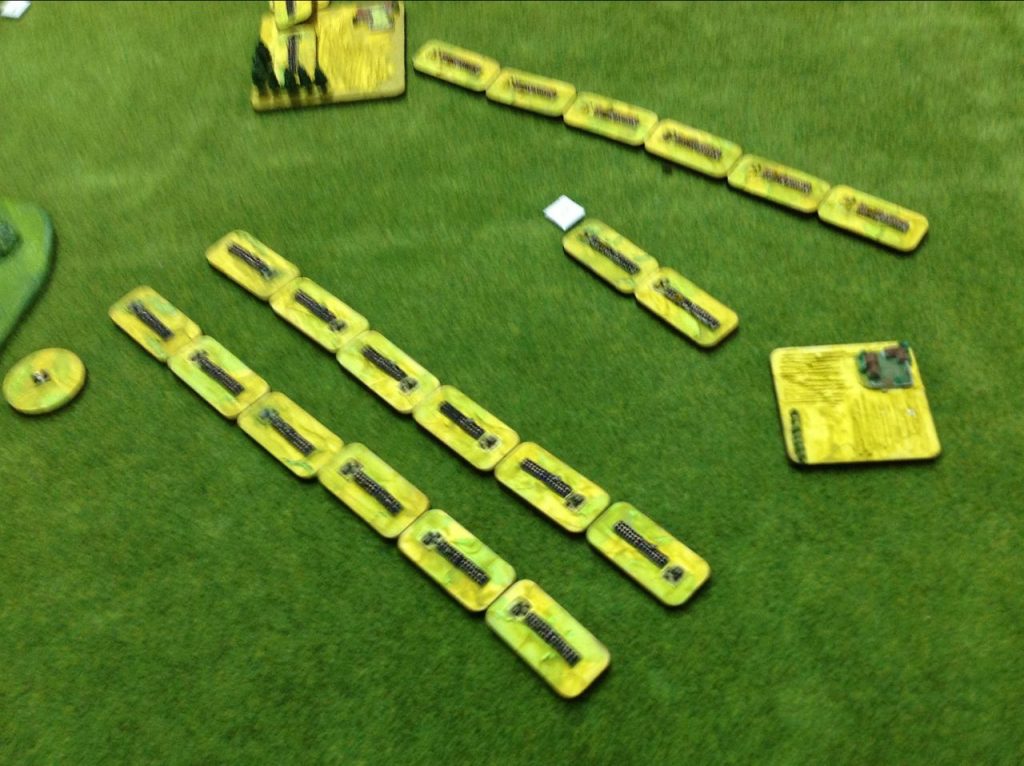
The broken austrian cavalry wing retires but is subject to infantry fire, they loose two more cavalry regiments defending the low hill.
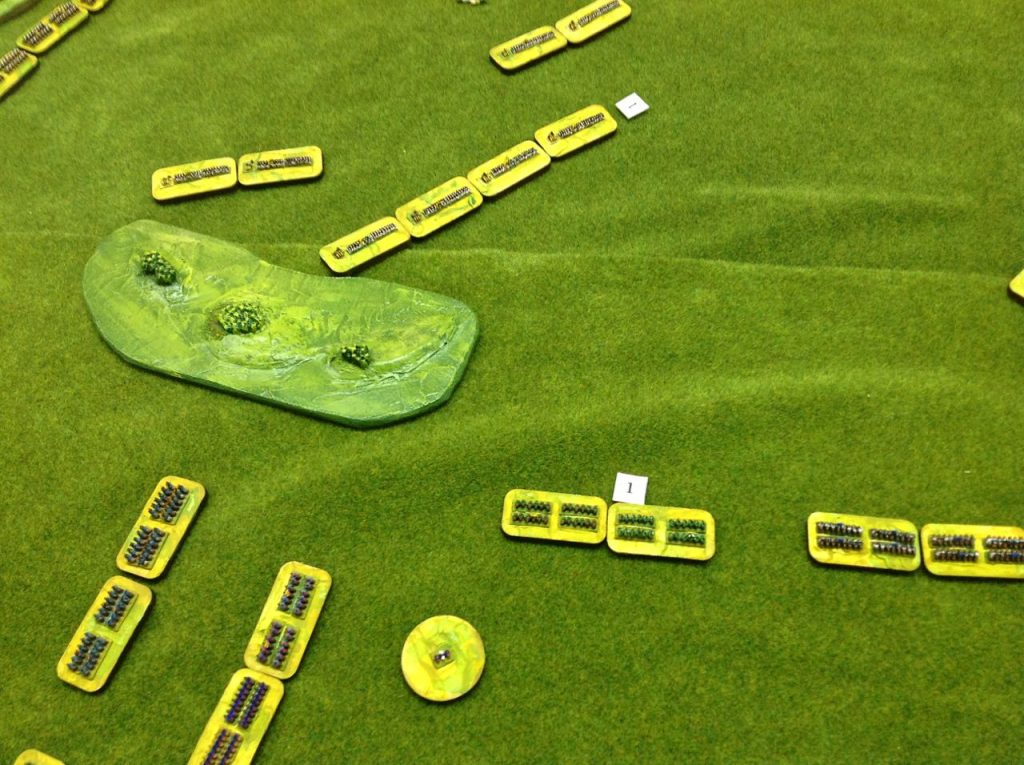
Only one battery and a grenadier regiment is left to defend the exposed flank of the prussian infantry. Two light infantry regiments come out of their shelter and attack, trying to get a foothold of the close fields near the prussian battery.
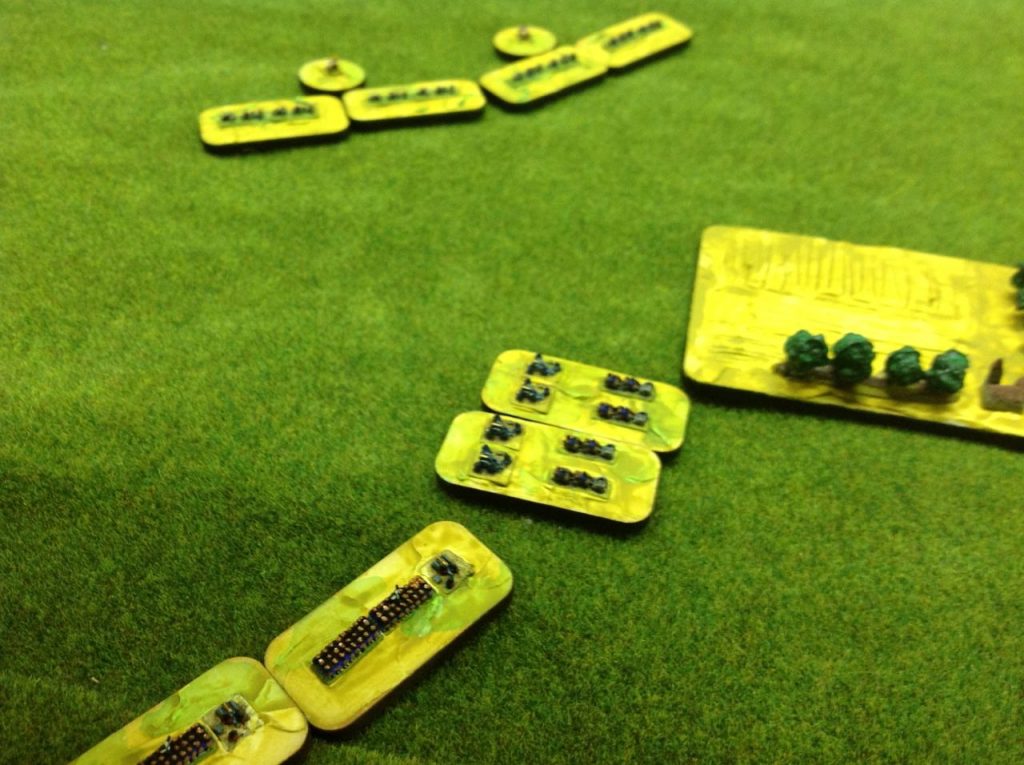
The prussian guards have finally reached the enemy, a bloddy melee is not sufficient to break the enemy, they will fall back!
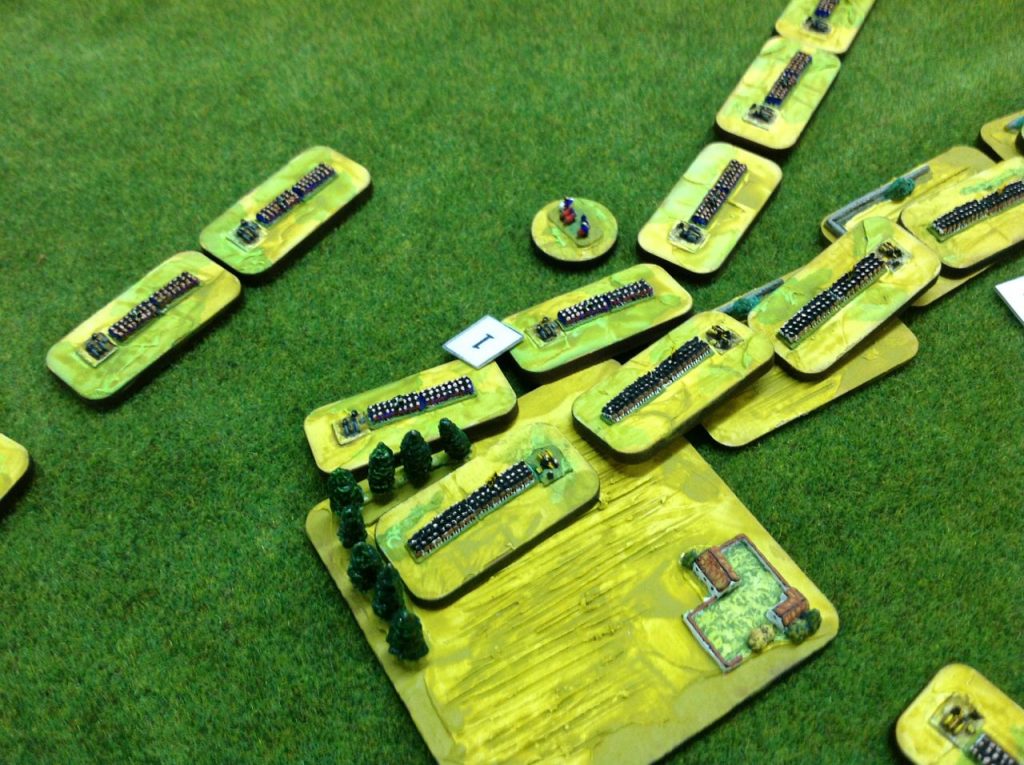
The Prussian grenadiers are reaching the enemy lines, but the morale of the army is breaking.
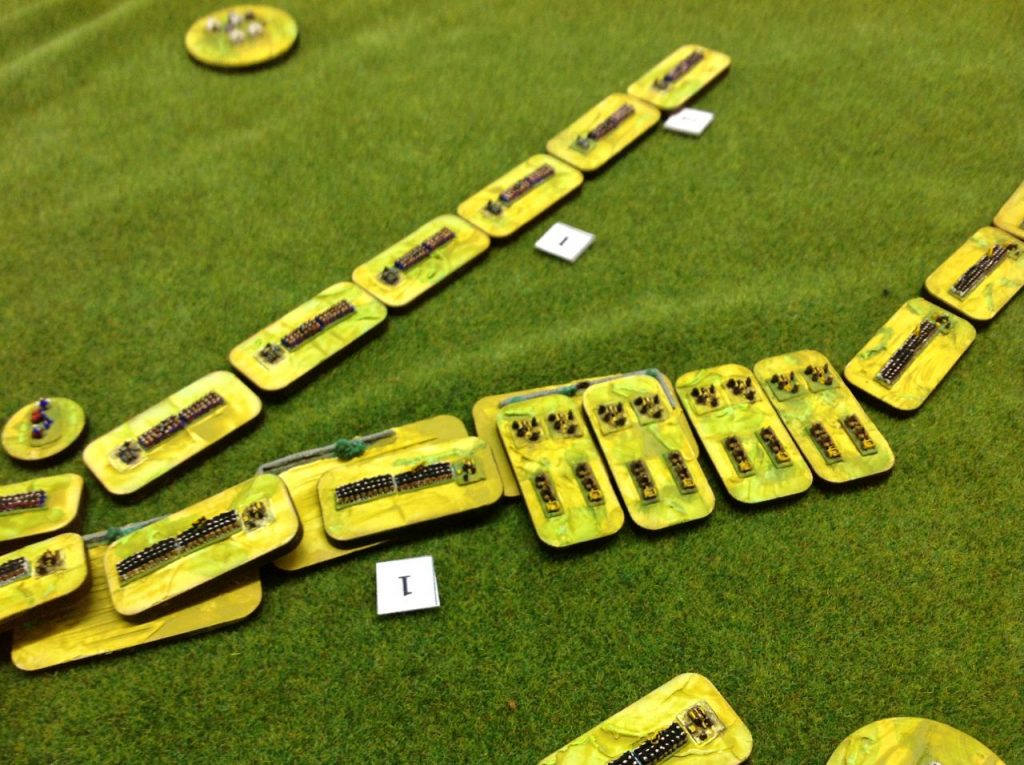
When the guards fallback, everything seems lost for the prussians.
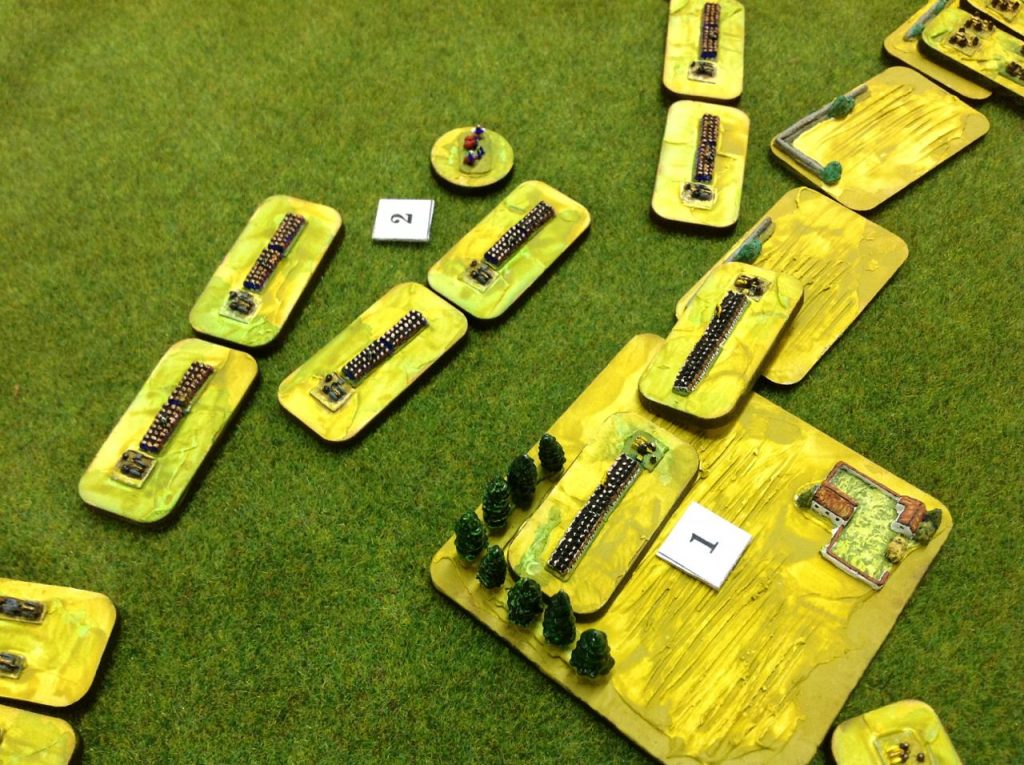

The austrian cavalry column reaches the austrian infantry lines on far left, but a cuirassier regiment is repulsed by an austrain battery with some losses.
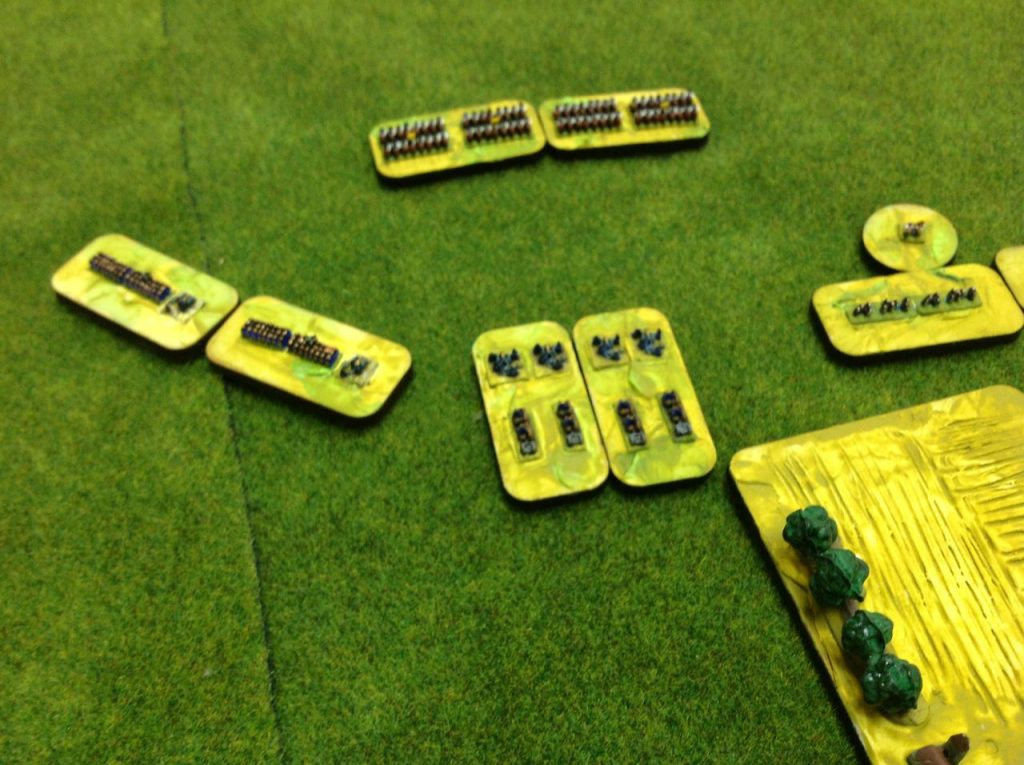
The austrians concede ground, battle is won by the asutrians.
Overall a good game, we will soon play a new battle using this simple but very interesting rule set.
Armies
I suggest we play with the following optional rules:
- Command breakdown, Caissons and wagons are used as command chits. Divide by half the number of units, this is the number of caissons or wagons allowed per command. One is removed for every routing unit under command. When no wagons or caissons are left, that command breaks.
- Orders



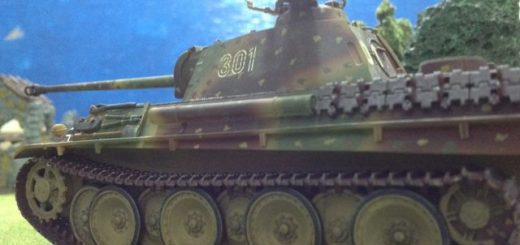
I just found this wiki today and very nice it is too.
With 2mm Armies being quite rare I’m always interested in how others use them. I use 30mm wide bases myself with Celtic Peoples of 200/400 BC being my chosen period.
Having painted and based about 300mm by 200mm of trees I have never successfully depicted troops in woods and can only suggest using some form of Hidden Movement Rule.
Thank you again for posting your Battles.
K.B